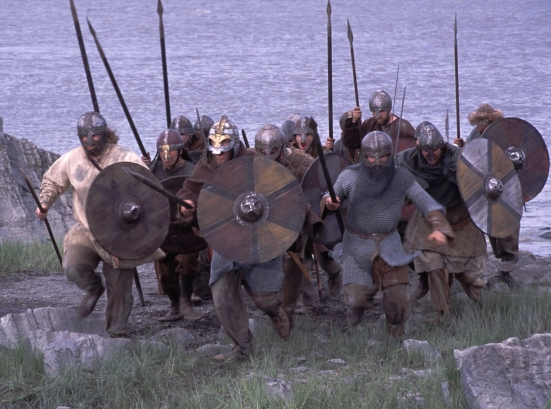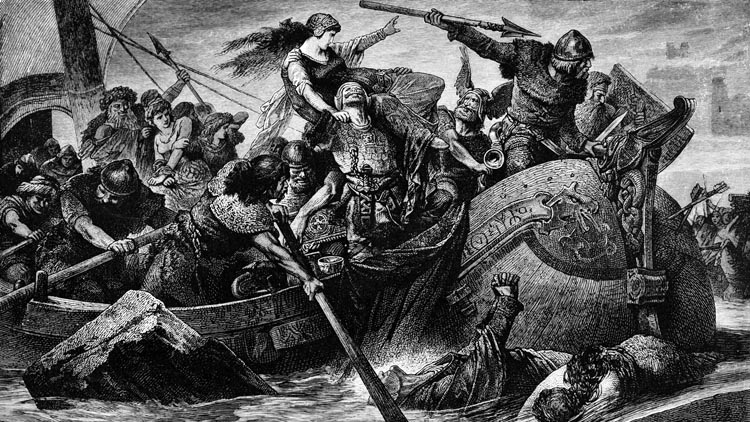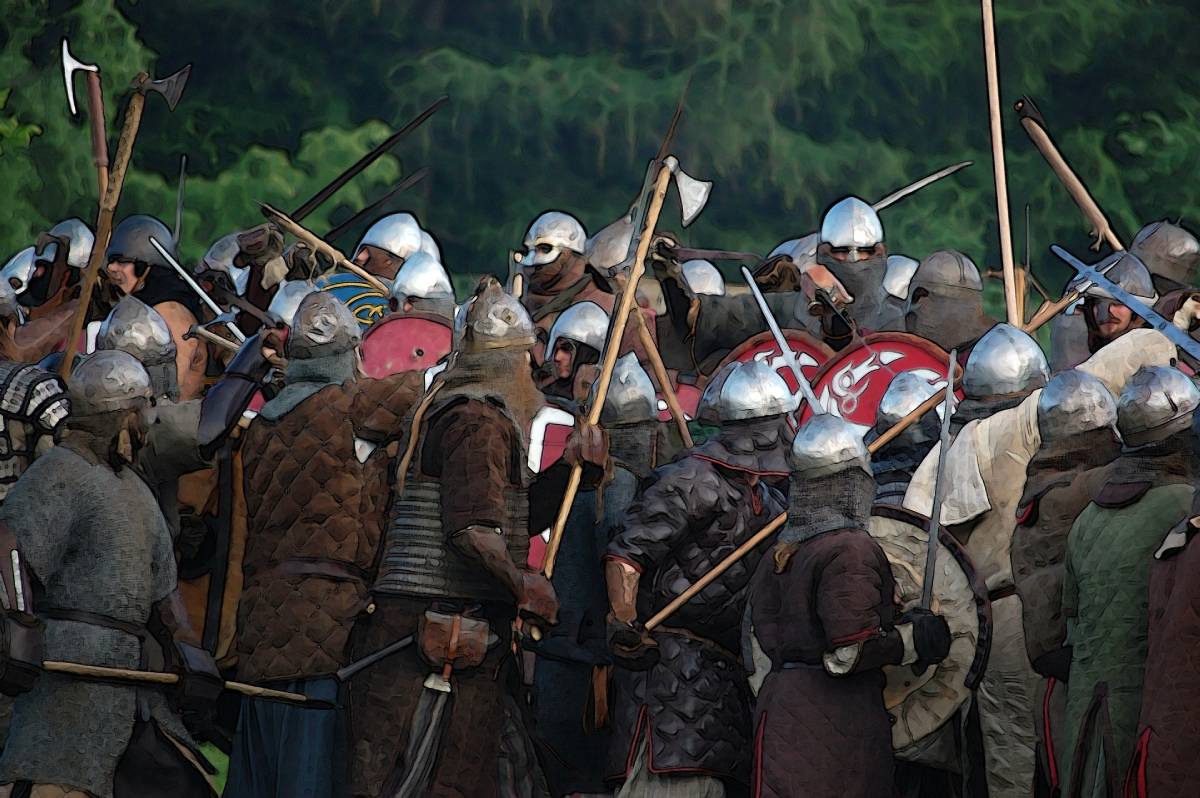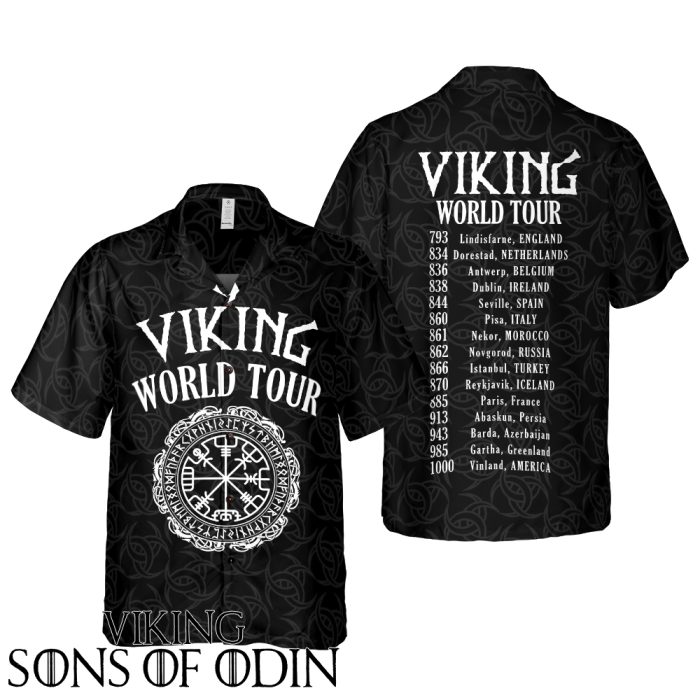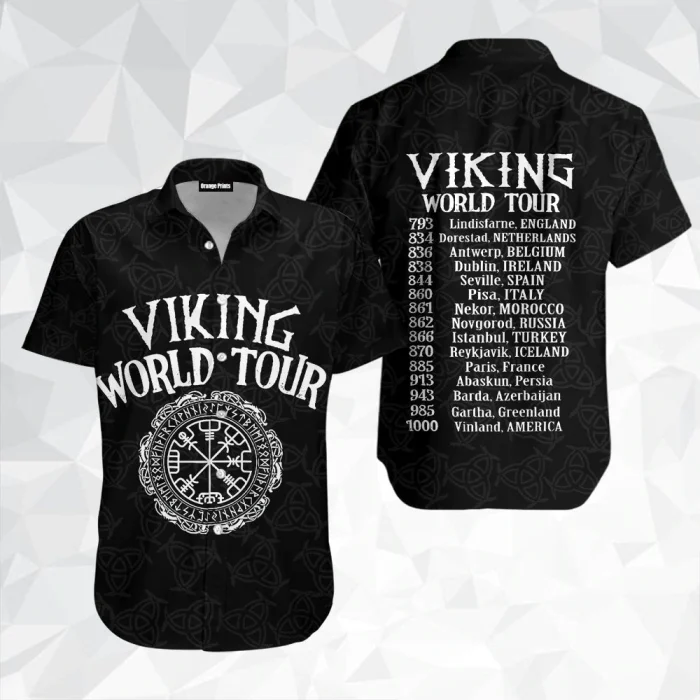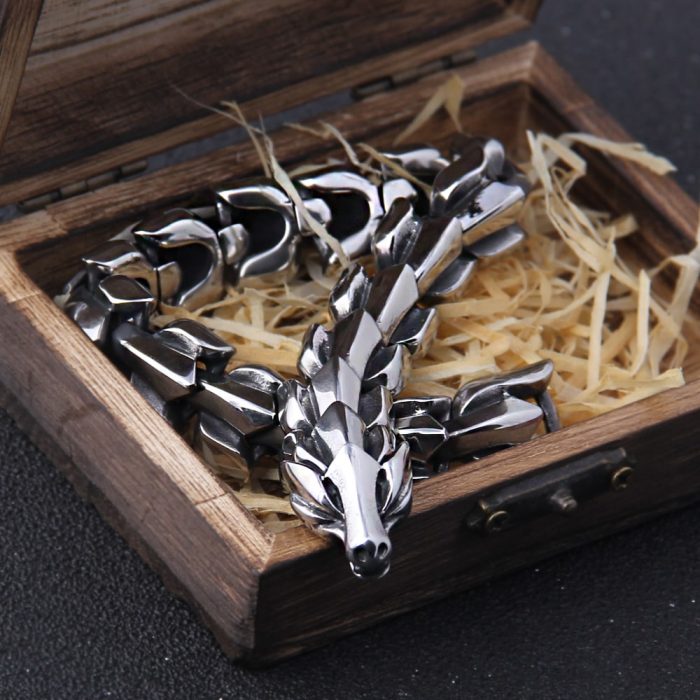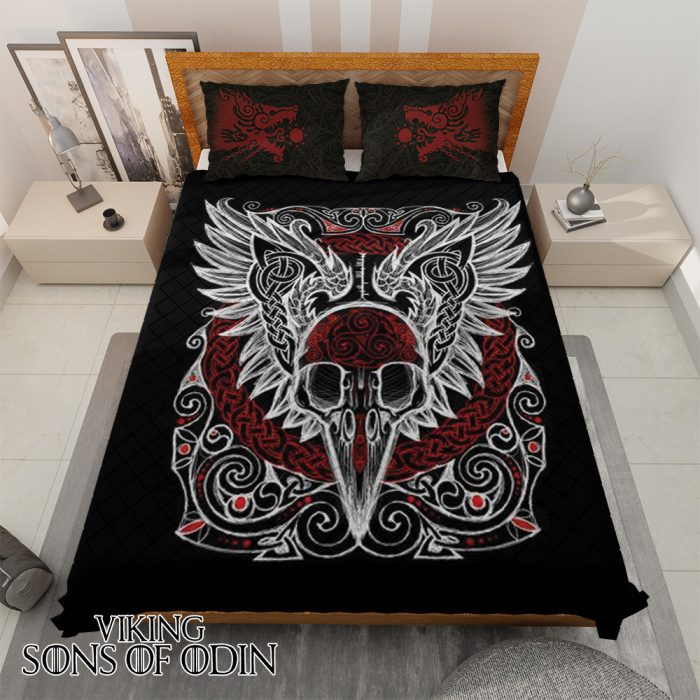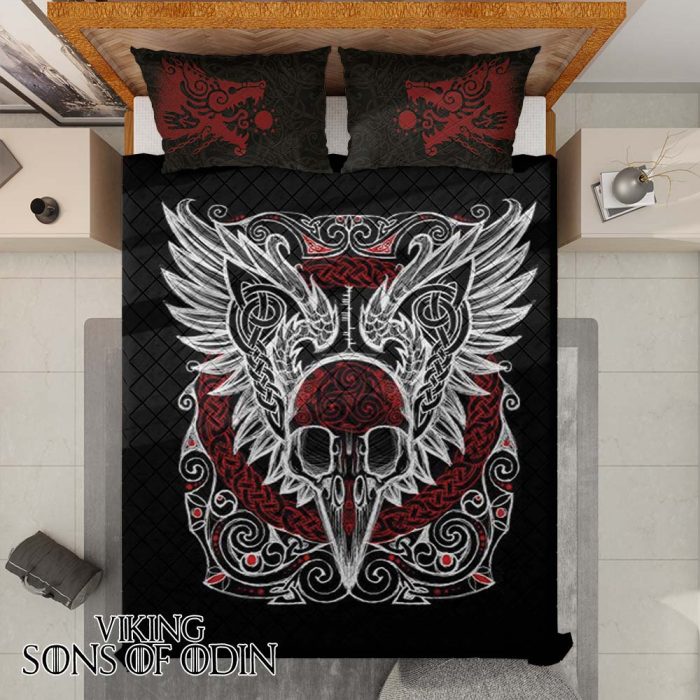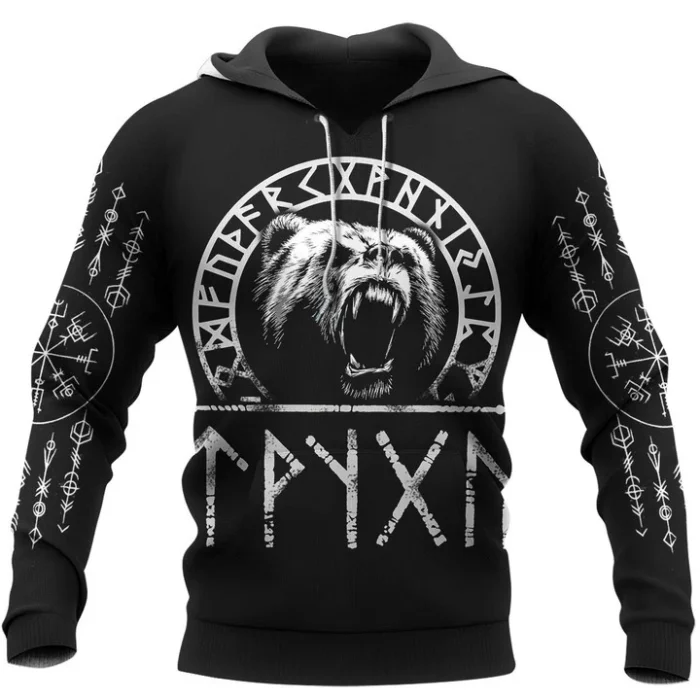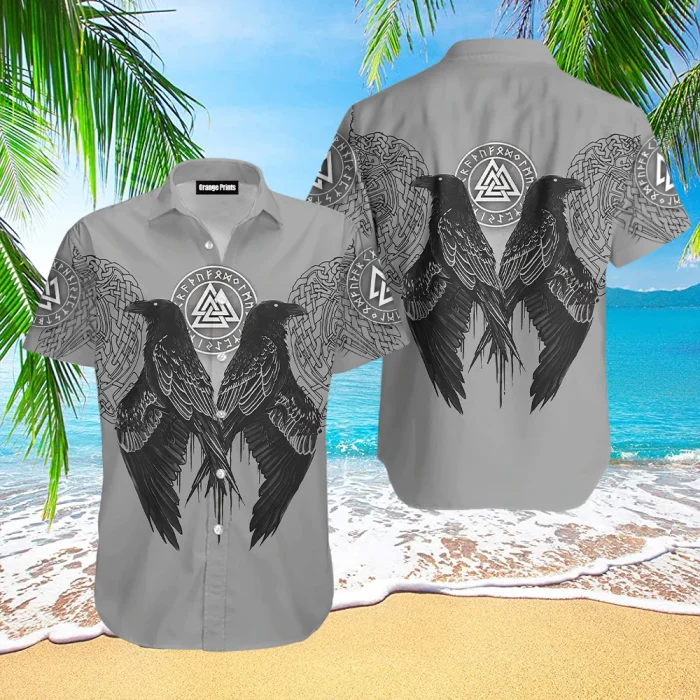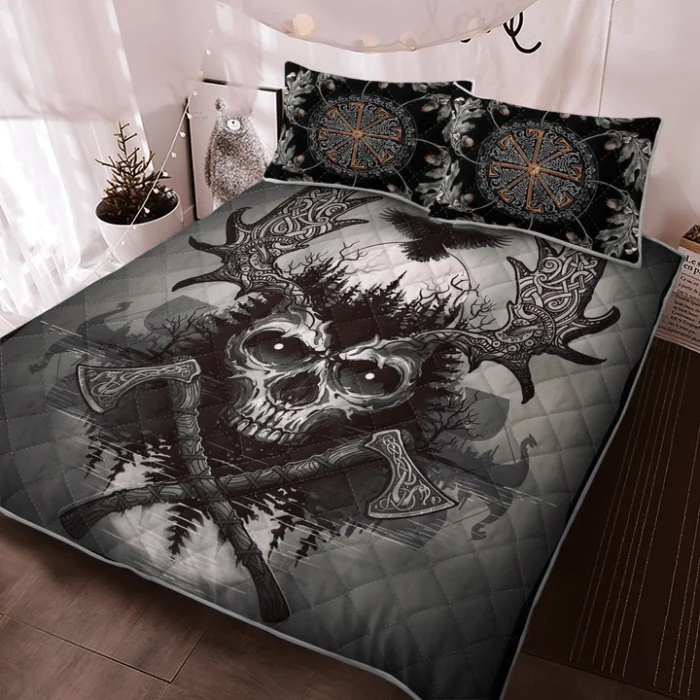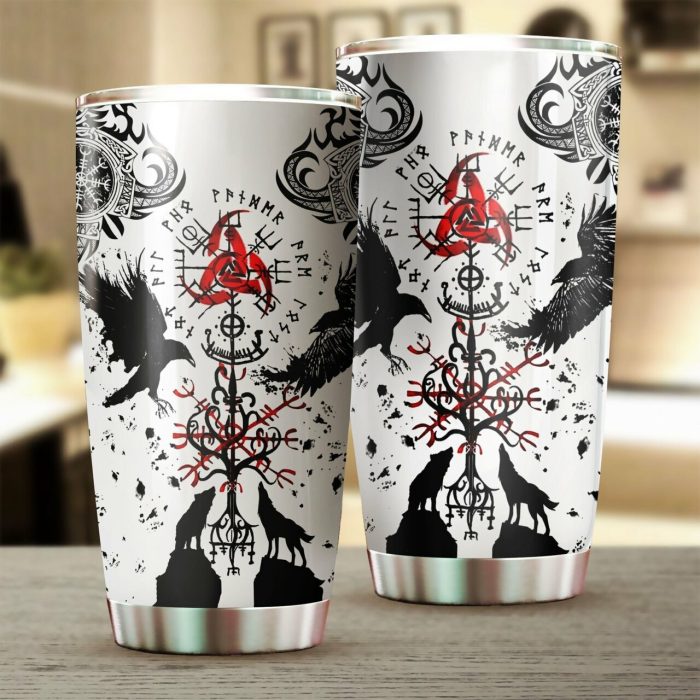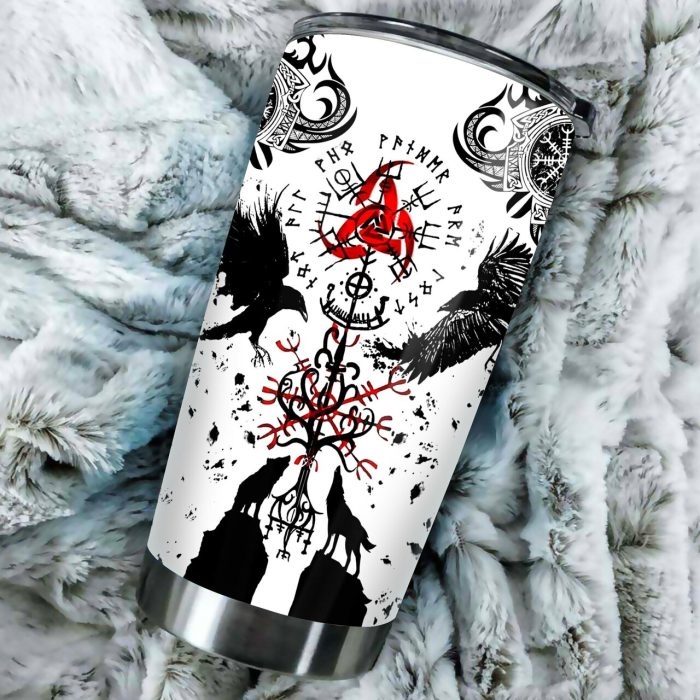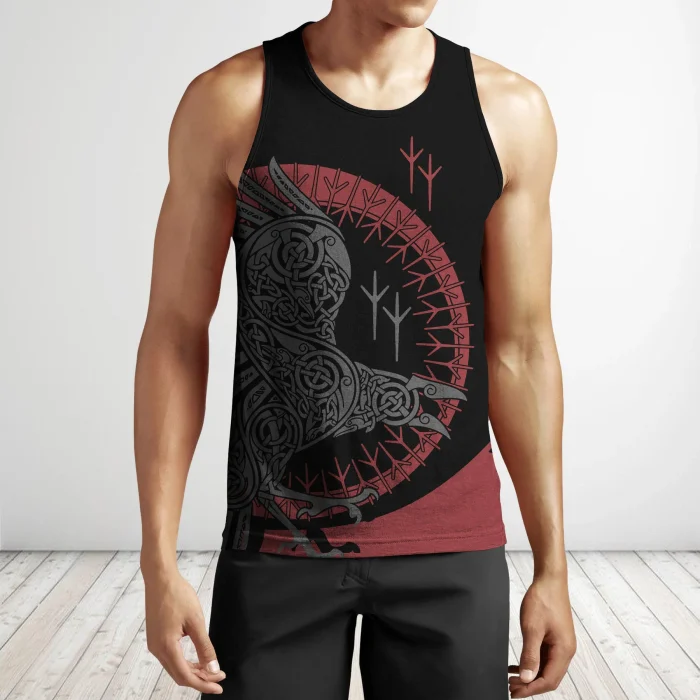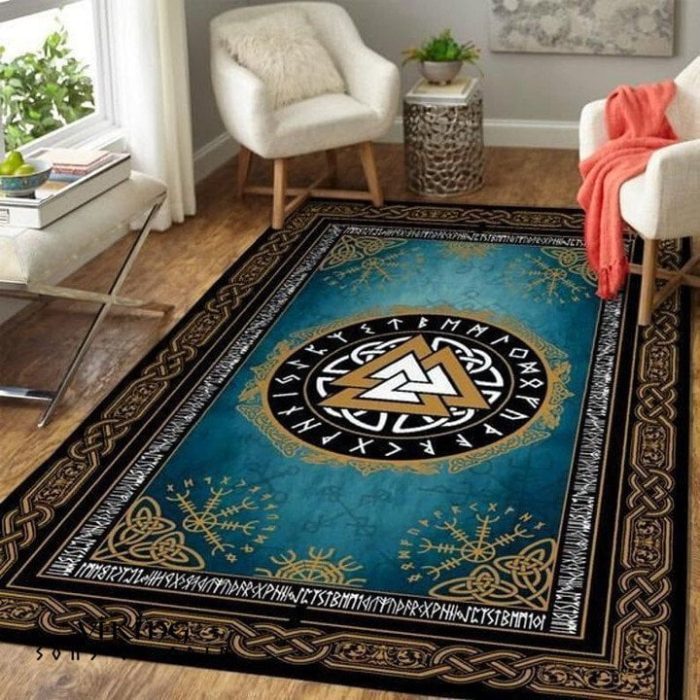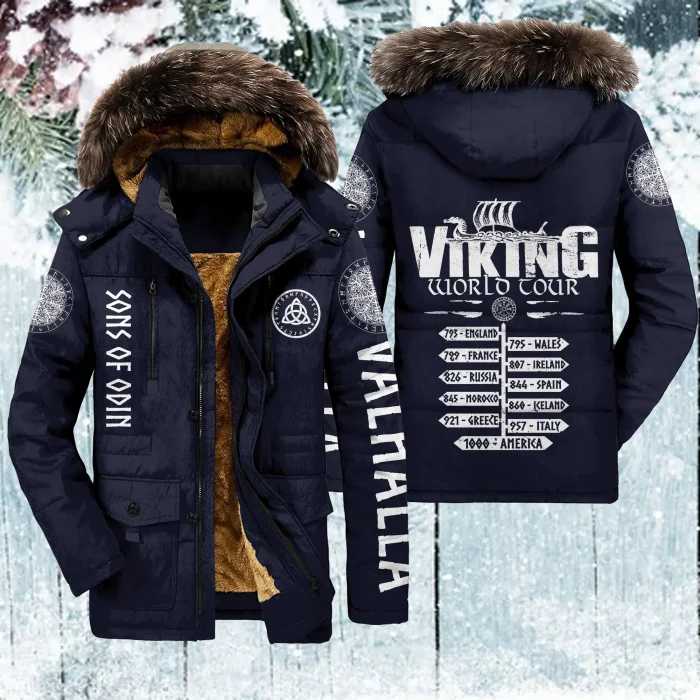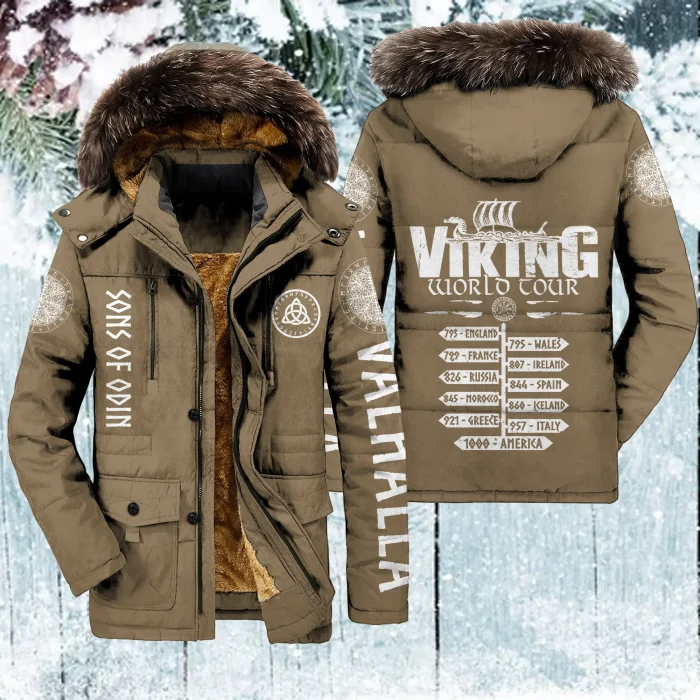Uncategorized
Viking World tour
| 789 – | Vikings begin their attacks on England. |
| 800 – | The Oseberg Viking longship is buried about this time |
| 840 – | Viking settlers found the city of Dublin in Ireland. |
| 844 – | A Viking raid on Seville is repulsed. |
| 860 – | Rus Vikings attack Constantinople (Istanbul). |
| 862 – | Novgorod in Russia is founded by the Rus Viking, Ulrich. |
| 866 – | Danish Vikings establish a kingdom in York, England. |
| 871 – | Alfred the Great becomes king of Wessex; the Danish advance is halted in England. |
| 872 – | Harald I gains control of Norway. |
| 879 – | Rurik establishes Kiev as the center of the Kievan Rus’ domains. |
| 886 – | Alfred divides England with the Danes under the Danelaw pact. |
| 900 – | The Vikings raid along the Mediterranean coast. |
| 911 – | The Viking chief Rollo is granted land by the Franks and founds Normandy in France. |
| 941 – | Rus Vikings attack Constantinople (Istanbul). |
| 981 – | Viking leader Erik the Red discovers Greenland. |
| 986 – | Viking ships sail in Newfoundland waters. |
| 991 – | Æthelred II pays the first Danegeld ransom to stop Danish attacks on England. |
| 995 – | Olav I conquers Norway and proclaims it a Christian kingdom. |
| 1000 – | Christianity reaches Greenland and Iceland. |
| 1000 – | Leif Eriksson, son of Erik the Red, explores the coast of North America. |
| 1000 – | Olav I dies; Norway is ruled by the Danes. |
| 1002 – | Brian Boru defeats the Norse and becomes the king of Ireland. |
| 1010 – | Viking explorer Thorfinn Karlsefni attempts to found a settlement in North America. |
| 1013 – | The Danes conquer England; Æthelred flees to Normandy. |
| 1015 – | Vikings abandon the Vinland settlement on the coast of North America. |
| 1016 – | Olav II regains Norway from the Danes. |
| 1016 – | The Danes under Knut (Canute) rule England. |
| 1028 – | Knut (Canute), king of England and Denmark, conquers Norway. |
| 1042 – | Edward the Confessor rules England with the support of the Danes. |
| 1050 – | The city of Oslo is founded in Norway. |
| 1066 – | Harold Godwinson king of England defeats Harald Hardrada king of Norway at the Battle of Stamford Bridge |
| 1066 – | William duke of Normandy defeats the Saxon king Harold at the Battle of Hastings. |
The earliest recorded time of Viking raids is in the 790s until the Norman conquest of England in 1066, commonly known as the Viking Age in Scandinavian history. However, the Normans are descendants of the Danish Vikings who were knighted in the northern part of France – the Duchy of Normandy – In the 10th century. Accordingly, the descendants of the Vikings continued. had an influence in northern Europe. Likewise, King Harold Godwinson, the last Anglo-Saxon king of England who ended the life of one of the last pagan Viking kings, was killed only a few weeks later during the invasion. strategy of the Normans – descendants of the Danish Vikings in 1066.
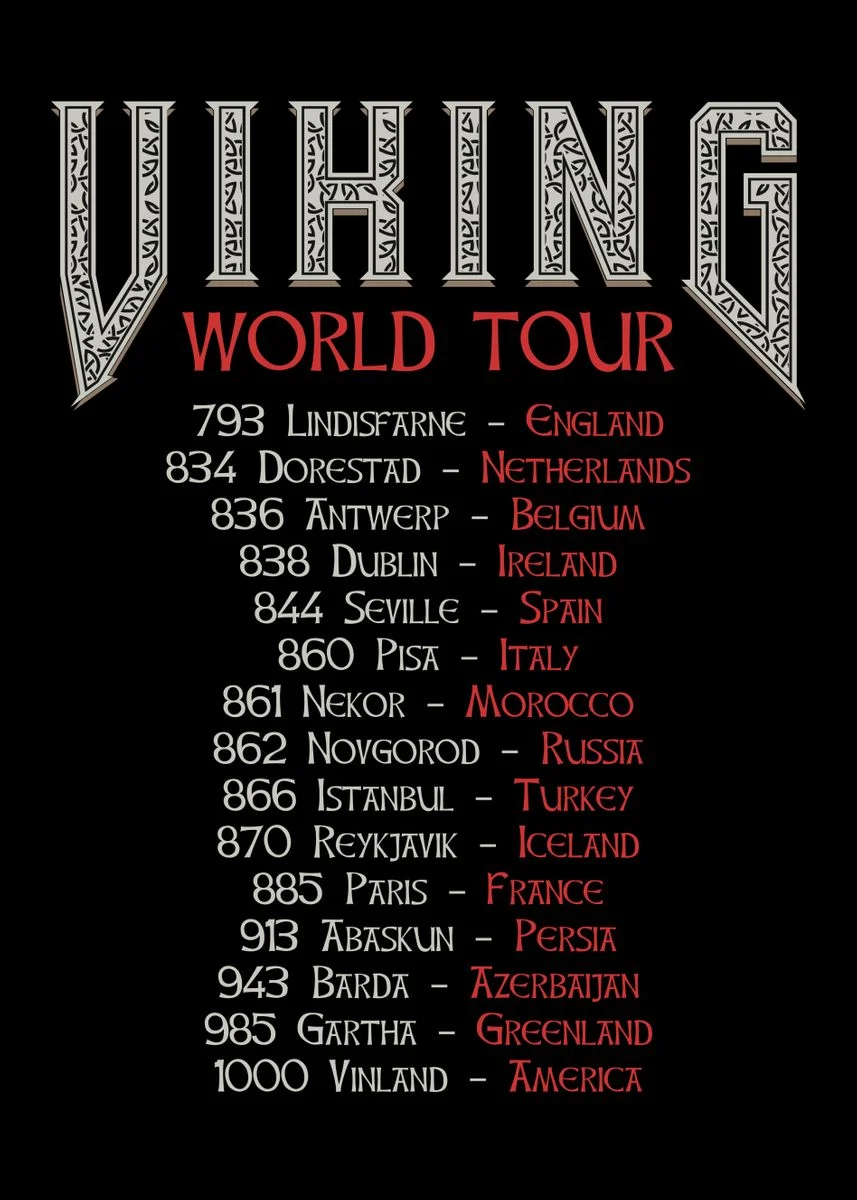
Geographically, a “Viking Age” refers not only to the Scandinavian lands (now Denmark, Norway and Sweden), but also to territories dominated by North Germanic peoples, mainly of the North Germanic race. mainly Danelaw, including the city of York, the administrative center of the rest of the Kingdom of Northumbria, the rest of Mercia and East Anglia. The Vikings opened sea routes to new lands to the west, north, and east, resulting in independent settlements in Shetland, Orkney, and the Faroe Islands; Iceland; Greenland; and L’Anse aux Meadows, A settlement founded briefly in Newfoundland, circa 1000 AD, many of these lands, namely Greenland and Iceland, may have originally been discovered shown by sailors lost in the wind. They may also have found out, perhaps on the basis of the records of sailors, who saw land in the distance. The Greenland settlement was eventually abandoned, possibly due to climate change. The Vikings also discovered and settled in Slavic territory and dominated Eastern Europe, especially the settlement of Kievan Rus. By 950 AD this settlement was largely Slavic
In early 839, when the Swedish emissary first visited Greece, the Scandinavians were serving as mercenaries for the Byzantine Empire. In the late 10th century, a new unit of the royal guard was established, which traditionally included a large number of Scandinavians. This force became known as the Varangian Guard. The term “Varangian” may be of Old Norse origin, but in Slavic and Greek it refers to Scandinavians or Franks. The most famous of the Scandinavians serving in the Varangian Guard was Harald Hardrada, who later established himself as king of Norway (1047-1066).
Important commercial ports during this period were Birka, Hedeby, Kaupang, Jorvik, Staraya Ladoga, Novgorod and Kiev. In general, the Norwegians expanded north and west to places like Ireland, Scotland, Iceland and Greenland, the Danes went to England and France, then settled again in Danelaw (Northeast of England). and Normandy; and the Swedes go east. These countries, despite their differences, are generally similar in terms of culture and language. The names of Scandinavian kings are known only in the latter part of the Viking Age. Only after the end of the Viking Age did these kingdoms acquire their distinct identity as different nations by the process of Christianization. Thus the end of the Viking Age in the Scandinavian countries also marked the beginning of their relatively brief Middle Ages.
Tribute and ransom
In 880 some members of the Great Heathen Host broke into Wessex again after which they left England to invade northern France and Belgium. Others infiltrated Germany and then returned to England. The Vikings often demanded a tribute they called the Danegeld (a single Viking leader named Ragnar invaded Paris with 150 ships. The King of France had to pay the Vikings an amount in silver equivalent to 50. million dollars today so they never come back….but this can’t be delayed for a long time either). The invaders split the money and took it home. In the 9th century the French had to pay £685 gold and £43,042 silver to the Vikings. In 911 King Charles of France had to accept to lose part of his kingdom to a Danish Viking leader named Rollo – Fat so that Rollo promised to drive the other Vikings away. The region is called Normandy, because “the man from the north” lives there. Attacks on aristocrats with higher ranks, the more Danegeld (ransom) increases. In 1012 the Vikings demanded £48,000 silver as a ransom for the Archbishop of Canterbury (a Viking captive). When the Vikings received no more ransom they beat the Archbishop to death with bones. Four years later Cnut the Great (the Dane) conquered all of England and collected £82,500 in silver then proclaimed himself king.
The Great Heathen Host
After the 800s AD Viking attacks increased steadily. A French monk wrote of the Vikings who “brought fire and sword everywhere, tortured to death and imprisoned, ravaged all monasteries and left fear.” More and more raids turned into invasions. Viking pirates settled in Orkney and Shetland in the north of Ireland, where they enslaved the natives. Others built fortresses in Ireland and attacked monasteries. In 844 the Vikings settled on the islands off the coast of France and in 851 they spent the winter in England for the first time. In 865 a group of Danes got together to form a gang known as the Great Heathen Host. Within 30 years they had invaded Western Europe. With a banner in the shape of a crow in flight they conquered northern and eastern England and created a territory known as Danelaw (Danish law). As this band of Danes moved farther and farther south they entered the British state of Wessex, King Alfred (of Saxon descent) had to retreat into a swamp with a small group of guerrillas. and and launched a series of successful counterattacks on the Danish invaders. By May 878, he forced the Vikings to surrender and secured a temporary peace. The Danes retreated and settled further east and about 30 Danish leaders were baptized and converted to Christianity. Faced with King Alfred and his army, the Vikings built a wall of shields (like a battle at sea) and raised their crow banner, which they believed would bring victory. . Soon the war turned into a disaster. 840 Danes were killed and the famous banner was confiscated.
The Vikings were the most frequent sailing people in the North Atlantic, south as far as North Africa and east as Russia, Constantinople and the Middle East, they were bandits, merchants, colonists and warriors. rent. The Vikings under the command of Leif Eriksson, heir to Erik the Red, reached North America and briefly established a settlement in what is now L’Anse aux Meadows, Newfoundland and Labrador , Canada.
The motivations for Viking expansion were a subject of much debate in Norse history. A popular theory posits that Charlemagne “Used force and terror to indoctrinate all pagans”, “baptize, convert or die with iron and blood” “as a human. Vikings and other pagans wanted revenge”.. Professor Rudolf Simek confirmed that “it is not a coincidence that the first Viking activity occurred during the reign of Emperor Charlemagne”. Because of the invasion. The introduction of Christianity in Scandinavia created the serious conflict that divided Norway for nearly a century.
One commonly accepted explanation is that the Nordic peoples had a higher rate of population growth than the increase in the amount of food produced in their Scandinavian countries. For some coastal populations with advanced seafaring techniques, expansion into foreign territories has a youth bulge effect. This explanation, however, has little logic to explain why they are expanding abroad rather than expanding their farming areas toward the vast forested regions within the Scandinavian Peninsula. It should be noted that it is easier to be a pirate than to clear a large area of forest and mountains for farming and pasture in this area is limited by one growing season (this is a cold climate zone). so the plant does not grow). Explanations for the increase in population or the decrease in agricultural production are not definitively proven.
Another explanation is that the Vikings sought to exploit a time of weakening in the surrounding countries. For example, the Danish Vikings saw the internal division of Charlemagne’s empire beginning in the 830s and the religious separatism that plagued the country. England was divided internally and many towns in near seas or rivers will become easy prey. The absence of well-organized coastal defense navies throughout Western Europe allowed Viking ships to roam freely, plunder and trade when opportunity permitted.
The decline in profitability of traditional trade routes may also have played a role. Trade between Western Europe and the rest of Eurasia was dealt a heavy blow when the Roman Empire fell in the 5th century. The expansion of Muslim influence in the 7th century also had adversely affect the trade of Western European countries. Trade in the Mediterranean was at its lowest point as the Vikings began to expand their influence. By opening new trade routes in the Arab regions and the Frankish lands, the Vikings benefited from international trade by expanding beyond their borders.
Vikings Combat Tactics
Shield Wall
The main formation of the Vikings in the battle was the “shield wall” or skjaldborg. The warriors stood side by side and held their shields so that the rim of one shield was close to the rim of the other, or even overlapped, but overlapping shields would not allow a formation to be created. The range is wide enough to use swords or axes, so the Class in front is only supposed to push the opponent or parry the enemy’s spears. Behind the shield wall, warriors carrying long spears charged at the enemy over the shoulders of their front row; Topographical factors can be decisive win-lose if one side holds an advantage, such as a higher position. Depending on the size of an army they can create several shield walls, one standing behind another.
Vikings from the outset often tried to gain a decisive advantage over their opponents with surprise attacks. Their raiding parties often landed on beaches or entered estuaries under cover of darkness or bad weather. The earlier Roman concept of a “standing army” seems to have disappeared in northern Europe since the 5th century, when they faced hit and run attacks in the regions. Friesians, Anglo-Saxons or Franks because there was no time to identify threats and assemble large defensive forces. The targets of the (Viking) raids were also carefully chosen to ensure success, especially the monasteries – although these are often used to store treasures, they are very poorly protected.
There is evidence that javelin throwers and archers are deployed both in front and behind troops to exploit weaknesses in the enemy’s shield wall. Then, the rows in front would clash with each other, warriors jostling each other, stabbing each other with spears and slashing each other with hammers until one side breaks through the other’s shield wall. In the process The course of the battle seems to be that the gap between the shields is opened up somewhat so that the soldiers can swing their battle axes and swords to fight each other. Weak points on the blanket wall can be attacked by a special formation that is created like a wedge known as – svynfylking – which is a formation consisting of every two warriors forming a point, three warriors in the second row, five warriors in the third row and so on the warriors on the outside carrying overlapping shields and the spearmen on the inside breaking through the opponent’s wall.
If the integrity of a shield wall had been damaged, it would not have been unusual for this force to be vulnerable to disruption and chaos. This was the time when the chieftains had to show their ability and individuality by regrouping and reorganizing their warriors, or by increasing the reinforcements he had stored in the rear. The Viking armies of the early Middle Ages were generally divided into three categories of warriors: individual men who were free to do military service when summoned; The–hersir- the rich, loyal to a Jarl-the chief (or later a king) and other armed men from his land; and the retainers-vassals who swore allegiance to him. a leader. The main target of the war is usually the leader of the opposing force. If he was killed, ordinary warriors – who rarely had good combat training – were released from their duty to fight for him and these mortals would lay down their weapons if they did not flee. battlefield. However, the matter of honor provided that the vassals sworn to the chieftain would continue to fight around their lord’s corpse until they were slain.
Battle at sea
The principle of the “sea battles” also took place according to the principle of the battles on land. The sides fastened (with ropes) most of their ships side by side to create space to form a shield wall. Attackers would attempt to break this formation, for example at the Battle of Hafrsfjord in 872, the Battle of Svöldr in 1000 and the Battle of Nissa in 1062. One by one ships were attacked and then separated from the squad. main image and then drift away. Both sides retained to use a number of ships outside the formation to maneuver, scout and challenge.
The Vikings used to attack the enemy by swimming against the side of the ship and attacking the deck, in a storm of arrows, throwing stones and launching javelins from both sides. If the defenders succeed in killing the attackers’ oars, or if the attackers’ oars are broken, the attack will often turn out to be a failure as they will be reduced in mechanical ability. motion. However, the elements of a true ancient naval battle – superior tactics, ramming, forcing an opponent to sail against the wind, or using a Catapult catapult – were known to most people. Vikings. Most sea battles took place in calm coastal waters, estuaries, where there was no space for these tactics.
Viking’s Army
The size of the Viking army was extremely varied, growing steadily and steadily from the late 8th to 11th centuries. A pre-Viking Anglo-Saxon manuscript calls a group of approx. Thirty-five warriors or more is an “army” and we can assume that the first Viking raids were carried out by such small gangs. Even in later records describing the battles of the battle, there is little mention of the number of Viking warriors; The size of a Viking army is usually estimated by the number of ships, and the number of crew members on board can vary according to the number of oars. Records of the siege of Paris in 886 – which say the Vikings had 40,000 men and 700 ships – are based on an average of less than 60 oars per ship, but crew numbers are likely to have varied. and anyway all figures from the past are generally considered “impressive” rather than numerically correct).
Initial raids were often led by a local leader, with the aim of capturing land at home or finding valuable loot and capturing slaves to sell abroad. His crew was usually recruited from men of the same family or clan and possibly several neighbors, all of whom had to procure the equipment themselves and hope that the The reward will be in the form of shared loot. Often they were both warriors and merchants, at one point selling what they had robbed in another. They usually have an elected leader, but important decisions are often discussed in the group. Some of the Viking warriors were very young, only 15 or even 12 years old when they first joined; all the boys learned strength, dexterity, and sharpness from an early age by hunts, and the fighting skills taught by their forefathers were practiced with friends.
The unification of the territories of Norway and Denmark into one kingdom changed the structure of the Viking army. For the defense of the country, this Scandinavian kingdom adopted the so-called leding – recruitment, this is the system of military service, whereby each free landowner must provide people and equipment. military equipment, ships and weapons, the number of which depends on the amount of land he holds. Leding was later replaced by a tax that was used as a source to pay the salary of a professional soldier. The king commands his army and is protected by his personal bodyguard Hird, each of whom has sworn allegiance to the king.
There is some skepticism about the numbers quoted, but it is not uncommon to have a large army in the Viking age. The Northerners (Norwegian Vikings) are said to have lost at least 8,000 men at the Battle of Saucourt in 881. The army led by King Harald Hadrada was defeated at the Battle of Stamford Bridge in 1066 is said to have lost between 240 and 300 ships. OlafTryggvasson raided Maldon in 991 with a fleet of 93 ships, with the aim of raising funds to fund his efforts in Norway to regain the throne.
Occasionally there are a few kings, e.g. Harald Bluetooth – which provides part of his army with weapons and even armor. The increase in mercenaries was also another factor; An example is the army of Thorkel the Great – serving only themselves and those who pay the highest.
Fortifications
There are several Viking Age fortifications known as “wall castles” at Fyrkat, Aggersborg, Trelleborg, Nonnebakken and of course Danewerk. These great defensive structures are all in the Southern Jutland – they are 2m high and 12m (6.5ft & 39ft) wide, and are made of wood – connecting natural obstacles together to provide protection against against the Slavic and Germanic bandits. The first part of this system was built in 737 and the last part was completed in 968. Its overall length is about 30 km (18.6 mi) with only one gate through it to Viborg. Haithabu, one of the most important trading cities of the time, was located in the vicinity of Danewerk. But not even Dannewerk could stop the Germans under Emperor Otto II from conquering much of southern Denmark in 974 (they were driven out in 983).
All four Viking fortresses were all built during the second half of the 10th century and are all similar in structure, only different in size. Each fortress is a circular wall and deep moat and two main roads intersect in the inner city. At Trelleborg, Fyrkat and Nonnebakken there are 16 longhouses – large longhouses divided into four symmetrical groups; at Aggersborg there are buildings twice as large in diameter than elsewhere and as many as three times as many. Outside the main walls there are additional surrounding fences and buildings, the arrangement of which varies from location to location. Although military use is natural, the main purpose of these fortifications was to protect the local population, as well as provide suitable accommodation for the representatives of the Danish king.
Translation and editing : Viking Sons Of Odin

